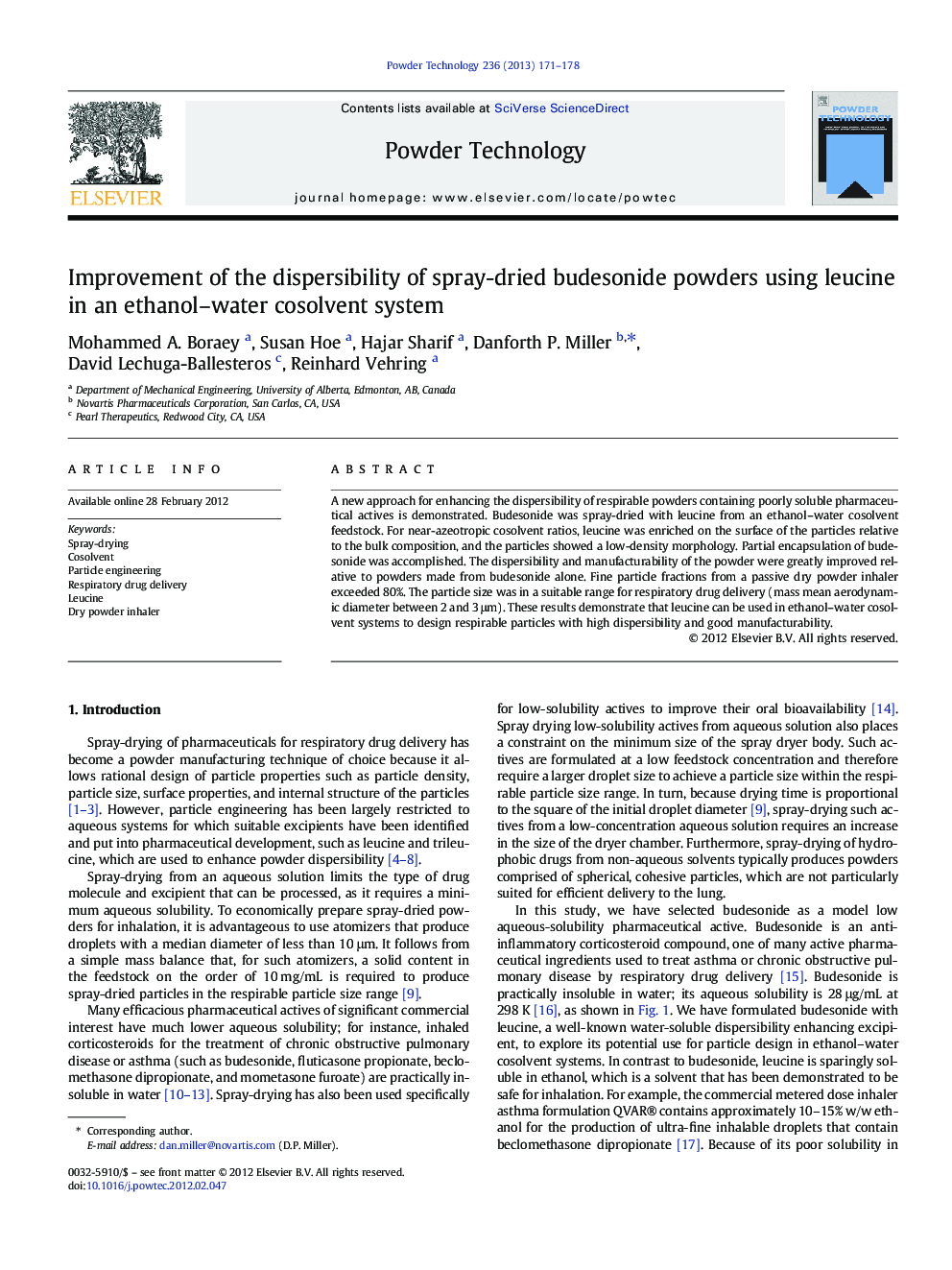| Article ID | Journal | Published Year | Pages | File Type |
|---|---|---|---|---|
| 236601 | Powder Technology | 2013 | 8 Pages |
A new approach for enhancing the dispersibility of respirable powders containing poorly soluble pharmaceutical actives is demonstrated. Budesonide was spray-dried with leucine from an ethanol–water cosolvent feedstock. For near-azeotropic cosolvent ratios, leucine was enriched on the surface of the particles relative to the bulk composition, and the particles showed a low-density morphology. Partial encapsulation of budesonide was accomplished. The dispersibility and manufacturability of the powder were greatly improved relative to powders made from budesonide alone. Fine particle fractions from a passive dry powder inhaler exceeded 80%. The particle size was in a suitable range for respiratory drug delivery (mass mean aerodynamic diameter between 2 and 3 μm). These results demonstrate that leucine can be used in ethanol–water cosolvent systems to design respirable particles with high dispersibility and good manufacturability.
Graphical abstractSpray drying of hydrophobic drugs from non-aqueous solvents typically produces powders comprising dense, cohesive particles. In contrast, the use of a cosolvent enables spray drying of low-density particles with a hydrophobic drug core and a shell of crystalline leucine − a non-hygroscopic, low-surface energy agent. This particle engineering approach enables manufacture of highly dispersible, respirable particles suitable for inhaled drug delivery.Figure optionsDownload full-size imageDownload as PowerPoint slide
